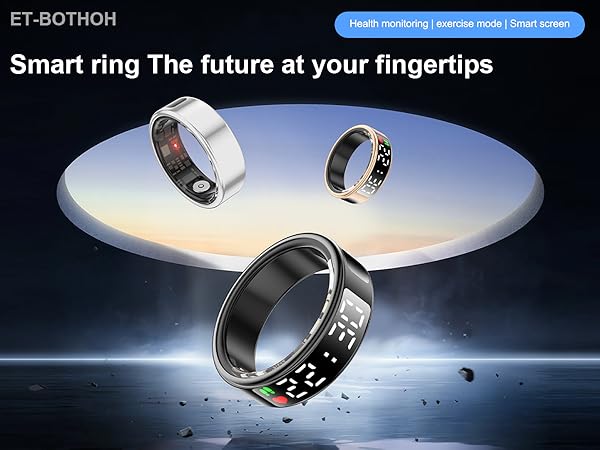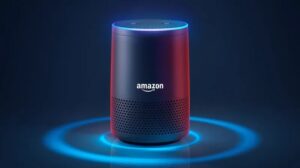The world of wearable technology is undergoing a profound transformation, evolving far beyond the simple step counters and heart rate monitors that first captured our imagination. We are entering a new era where these devices are no longer passive data collectors but active, intelligent companions, powered by sophisticated Artificial Intelligence. This shift is blurring the lines between fashion, wellness, and technology, creating a new category of devices that are as stylish as they are smart. From smartwatches that predict health events to rings that optimize your sleep and even AI-powered glasses that augment your reality, the integration of AI is making our technology more personal, proactive, and seamlessly woven into the fabric of our daily lives. This evolution isn’t just an incremental update; it’s a fundamental reimagining of what wearables can be, promising a future where our gadgets understand us on a deeply personal level, offering insights and assistance that were once the domain of science fiction. This article delves into this exciting intersection, exploring the AI technologies driving this change and the impact on everything from personal health to smart home integration.
The AI-Powered Evolution of Wearable Technology
The journey of wearables has been one of rapid acceleration. What began as a niche for fitness enthusiasts has exploded into a mainstream phenomenon, with devices adorning the wrists, fingers, and even faces of millions worldwide. The catalyst for this latest leap forward is undeniably Artificial Intelligence, which is turning raw sensor data into actionable, life-changing insights.
From Step Counters to Life Coaches: The Journey of Wearables
Early wearables were glorified pedometers. They tracked steps, estimated calories burned, and offered a rudimentary look at sleep patterns. While novel, their utility was limited. The data was often presented in raw formats, leaving the user to interpret its meaning. Today, the narrative has completely changed. Thanks to AI, the latest in AI in Fashion / Wearable Tech News isn’t just about new hardware, but about the intelligent software that powers it. Devices like the Apple Watch, Oura Ring, and Whoop band have become sophisticated health monitoring platforms. They don’t just tell you how many hours you slept; they analyze your sleep stages, measure heart rate variability (HRV), track skin temperature, and blood oxygen levels to generate a holistic “readiness” or “recovery” score. This score, a product of complex AI algorithms, acts as a daily guide, advising you on whether to push hard in a workout or prioritize rest.
The AI Engine: What’s Under the Hood?
At the heart of this revolution are machine learning (ML) models trained on vast datasets of physiological information. These models are adept at pattern recognition, learning the unique baseline of each user. This is where the magic happens. An AI can detect subtle deviations from your personal norm—a slightly elevated resting heart rate or a change in respiratory rate—that could be early indicators of fatigue, stress, or even impending illness. This is a core focus of Health & BioAI Gadgets News. The technology relies on a principle called sensor fusion, where data from multiple sensors (accelerometers, gyroscopes, optical heart rate sensors, temperature sensors) are combined to create a more accurate and comprehensive picture of your well-being. Furthermore, there is a significant trend towards on-device processing, a key topic in AI Edge Devices News, which enhances privacy and reduces latency by performing calculations directly on the wearable rather than in the cloud.
Beyond the Wrist: The Diversification of Form Factors
While the smartwatch remains the most popular form factor, AI is enabling a diversification of wearable technology. Smart rings, for example, offer a more discreet and comfortable way to track sleep and activity 24/7. Smart glasses, a major point of interest in Smart Glasses News, are evolving from simple notification displays to powerful AR/VR AI Gadgets News platforms, capable of real-time translation or providing contextual information overlaid on the real world. We are also seeing the emergence of smart clothing with integrated sensors, truly merging fashion with function. These varied forms are all part of a broader ecosystem of AI Sensors & IoT News, where a network of intelligent devices works in concert to understand and assist the user.
Deep Dive: AI’s Role in Personalized Health and Wellness
The most significant impact of AI in wearables is its ability to deliver hyper-personalized health and wellness guidance. By moving beyond generic advice, these devices are becoming indispensable tools for proactive health management, a central theme in AI Fitness Devices News and AI Sleep / Wellness Gadgets News.

Hyper-Personalized Health Insights
Consider the concept of workout recovery. A generic fitness plan might recommend a rest day after a strenuous workout. An AI-powered wearable, however, analyzes your specific physiological response. It looks at your HRV, which is a key indicator of nervous system recovery, your sleep quality, and your resting heart rate. Based on this highly personal data, it might determine that you are fully recovered and ready for another intense session, or it might advise a light activity day because your body is showing signs of strain. This level of personalization extends to all areas of health. For instance, continuous body temperature monitoring can help in cycle tracking for women with unprecedented accuracy or provide early warnings of fever. This is the frontier of AI Monitoring Devices News, where the goal is to catch health issues before they become serious problems.
The Proactive Wellness Companion
The next evolution is the shift from reactive reporting to proactive intervention. Modern wearables are becoming powerful AI Assistants News dedicated to your well-being. Imagine a device that detects a sustained increase in your heart rate and a decrease in HRV during your workday. Instead of just logging this as “high stress,” it could proactively send a notification suggesting a 5-minute guided breathing exercise. It learns what works for you over time, becoming a true AI Companion Devices News. This proactive nature is crucial. It can help manage chronic stress, improve focus, and build healthier habits by providing the right nudge at the right time, transforming data into a dialogue about your health.
The Connected Ecosystem: Integrating Wearables with the Smart Home
The power of AI wearables is amplified when they connect to a broader ecosystem. This is a major topic in Smart Home AI News. Your wearable can act as the central hub for your personal environment. For example, upon detecting that you’ve entered a deep sleep stage, it could signal your smart thermostat to lower the temperature slightly and your AI Lighting Gadgets News to ensure all lights are off. When it senses you’re beginning to wake up, it could trigger a gentle sunrise simulation with your lights, start your smart coffee maker, and have your AI Audio / Speakers News play a calm morning playlist. This seamless orchestration, where your environment adapts to your physiological state, extends to all smart devices. The system could ensure your Robotics Vacuum News doesn’t start its cycle while you’re on an important call or meditating. This vision of ambient computing, powered by personal AI, connects disparate gadgets, from Smart Appliances News to AI Security Gadgets News, into a cohesive, responsive whole.
AI Beyond Health: Weaving Intelligence into Daily Life and Fashion
While health and wellness are the current killer apps for AI in wearables, the technology’s potential extends much further, touching upon our style, productivity, and interaction with the digital world. The future points towards a reality where our devices are not just functional but are also integrated into our personal aesthetic and daily routines.
AI as a Personal Stylist
The intersection of AI and fashion is a rapidly growing field. AI algorithms can act as personal stylists, offering outfit recommendations based on the clothes you own, the day’s weather, and the events on your calendar. This often involves using the camera on your AI Phone & Mobile Devices News to digitize your wardrobe. Wearables can play a key role here. A future smart-textile garment could change color or pattern based on your mood, detected through biometric data, or display information subtly. This is the cutting edge of AI in Fashion / Wearable Tech News, where clothing becomes a dynamic and interactive interface. These systems are powered by the same kind of visual intelligence seen in AI-enabled Cameras & Vision News, but applied to personal style.
Seamless Integration and Ambient Computing

Wearables are becoming the primary interface for a world of ambient computing. Instead of constantly pulling out a phone, a simple gesture or voice command directed at your watch or glasses could control your environment. This is where different AI-powered devices converge. You could be wearing smart glasses that provide navigation through an unfamiliar city, while your smartwatch monitors your stress levels and your AI-powered earbuds translate a foreign language in real-time. The long-term vision in this space, explored in AI Research / Prototypes News, even includes the development of non-invasive Neural Interfaces News, which could allow for thought-based control of devices, representing the ultimate seamless integration.
Security and Privacy in an AI-Driven World
This unprecedented level of data collection raises critical questions about privacy and security. Your biometric data is arguably the most personal data you have. It’s essential that companies in this space prioritize user privacy through robust encryption, transparent data policies, and, crucially, on-device processing. By keeping sensitive data on the device itself (an application of AI Edge Devices News), the risk of cloud-based data breaches is significantly minimized. Consumers must be given granular control over what data is collected and how it is used. The development of sophisticated AI Security Gadgets News and protocols is paramount to building and maintaining user trust in this evolving ecosystem.
The Future on Display: Trends, Challenges, and Recommendations
The road ahead for AI in wearables is filled with both exciting possibilities and significant challenges. Navigating this landscape requires a clear understanding of emerging trends and a critical eye toward the technology’s implementation.
Emerging Trends: What’s Next?

The next wave of innovation will likely focus on even more advanced, non-invasive health monitoring. Researchers are actively working on wearable sensors that can track blood glucose levels without a skin prick, monitor blood pressure continuously, and even detect specific biomarkers for diseases from sweat. The field of AI for Accessibility Devices News is also a promising area, with wearables being developed to assist individuals with visual or hearing impairments. Another trend is the rise of specialized devices, such as AI in Sports Gadgets News that provide real-time feedback on an athlete’s form or AI Toys & Entertainment Gadgets News that create more immersive and interactive play experiences.
Navigating the Hype: Practical Considerations for Consumers
For those looking to invest in a smart wearable, it’s important to look beyond the marketing.
- Data Accuracy and Validation: How accurate are the sensors? Look for devices that have been validated in studies or have a reputation for reliability.
- Subscription Models: Be aware that many advanced AI features are locked behind a monthly subscription. Factor this recurring cost into your decision. – Ecosystem Compatibility: Does the device work well with your smartphone and other smart devices? A seamless ecosystem enhances the overall experience. – Battery Life: A device is useless if it’s always on the charger. Consider how the battery life fits your lifestyle, especially for sleep tracking.
Ethical Pitfalls and Best Practices for Developers
Developers and companies have a significant ethical responsibility. Algorithmic bias is a major concern; models trained on non-diverse datasets can be less accurate for certain demographic groups. Transparency is key—users should understand how their data is being used to generate insights. The goal should not be to create anxiety by constantly flagging minor deviations but to empower users with understandable and actionable information. Following best practices in data security and ethical AI design is not just good practice; it’s essential for the long-term viability of the industry.
Conclusion: Your Future is Wearable
The integration of Artificial Intelligence has fundamentally elevated wearable technology from a novelty to an essential tool for modern life. We are witnessing the dawn of truly personal computing, where technology understands our bodies, anticipates our needs, and seamlessly integrates into our environment. The latest developments in AI in Fashion / Wearable Tech News show a clear trajectory: devices are becoming more discreet, more powerful, and more intelligent. They are our personal health coaches, our productivity assistants, and our interface to a smarter world. As the technology continues to mature, the challenges of privacy, security, and ethical design must be met with equal innovation. The future is not just about wearing technology; it’s about technology that wears well with us, creating a healthier, more efficient, and more connected human experience.










